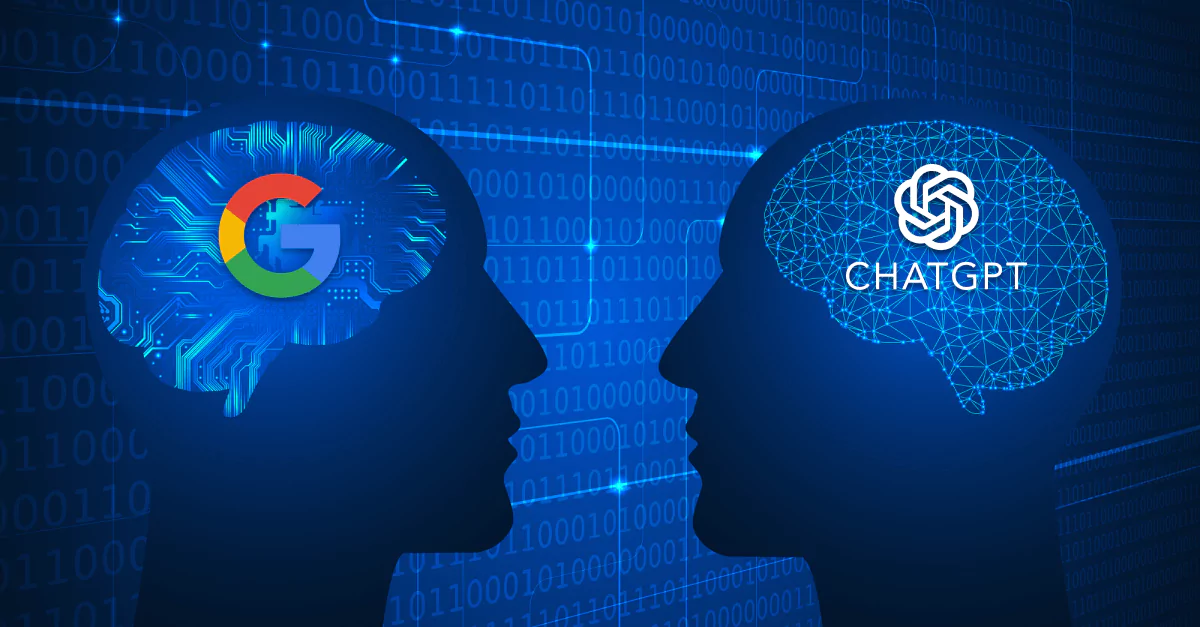A deep dive into the world of ChatGPT and Bard, the powerful generative AI models that are revolutionizing engineering and business applications.
By: Dima Kuchin, Head of Data and AI Practice, Sphere Partners
Venturing into the AI Frontier: Bard vs. ChatGPT
Artificial intelligence has evolved significantly, with generative AI models like Open AI’s ChatGPT quickly becoming household names. From brainstorming children’s party themes to crafting corporate presentations, AI tools are transforming our interaction with technology, seamlessly integrating into our everyday routines and making advanced technology accessible. In the last week alone, over 200 generative AI tools emerged, each bringing unique features.
With extensive experience in data science and NLP expertise, I’ve spent the last two decades building and managing data science and data engineering teams at rapidly growing enterprises like Meta, Lemonade, ZoomInfo, and WeWork. I’m passionate about delving into the cutting-edge world of AI, with a specific focus on applying AI’s remarkable capabilities in the business sector to improve efficiency.
Which Chatbot Is Better?
Although ChatGPT is arguably the most renowned generative AI model, Google recently unveiled Bard with high anticipation, aiming to level the playing field. It’s worth mentioning that Google has been at the forefront of AI technology, having designed deep-learning AI models known as Transformers, which debuted in 2017. These models’ rapid processing and flexibility facilitated groundbreaking advancements like question answering, text summarization, code generation, content creation, and language translation.
ChatGPT and Bard are members of the Transformer family, but their similarities largely stop there. Let’s investigate the distinguishing characteristics of each model in a comparative analysis.
ChatGPT: The Adaptive Professional
Created by OpenAI, ChatGPT is widely recognized for its remarkable capacity to generate text closely resembling human writing. Employing reinforcement learning from human feedback (RLHF), this AI model is adaptable to a wide range of uses, making it an essential component in various business operations. Moreover, with its readily accessible API, everyday and business implementation possibilities are limitless.
A notable strength of OpenAI lies in its swift advancement and implementation of new features, moving from GPT-3 to GPT-3.5 and GPT-4 in a mere two months per iteration. It’s speculated that GPT-4’s training set contains an astounding 1 petabyte of data (equivalent to 50,000 Wikipedias!). Moreover, a rich ecosystem of third-party plugins is available, empowering developers to greatly enhance the platform’s functionality and enable ChatGPT to interact dynamically with the digital realm by searching for current information, placing orders, and booking reservations.
ChatGPT Plugins
The flourishing ecosystem of ChatGPT plugins is expected to match the incredible success of the iPhone App Store. Since its launch in 2008, the App Store has cultivated a dynamic app market, amassing over $260 billion in revenue for developers while maintaining a committed user base that spends almost 35 hours per week using apps. ChatGPT’s plugin ecosystem holds immense potential to evolve into a similarly successful platform for developers and users alike.
Positioned as a rival to ChatGPT, Google’s Bard has seen mixed reviews from industry news sites like TechCrunch, with some claiming that it lags behind ChatGPT and GPT-4. However, I’ve found various instances that have proven Bard superior.
Bard: The Creative Virtuoso – A Challenger to ChatGPT
Bard excels in its ability to detect humor. In contrast to ChatGPT, which maintains a more “politically correct” approach, Bard shines with its linguistic mastery, sharp wit, captivating stories, and clever jokes. A prime example of Bard’s humor can be seen when asked: “write me a joke about the current state of global affairs.” Bard’s response: “What do you call a meeting of world leaders who can’t agree on anything? An UN-productive meeting.” Bard’s output is funnier than ChatGPT, which often prefaces jokes with a non-offensive disclaimer.
Regarding ethical training, Bard is less restrained than ChatGPT models, allowing it to provide bolder and more opinionated answers to questions like “what is the best country in the world?” Bard proposes Switzerland, Canada, and Australia, whereas ChatGPT tactfully avoids answering such questions due to ethical concerns.
Can Bard Write Code?
It’s noteworthy that while I believe ChatGPT to be superior in coding, Bard managed to create a React “hello world” application, despite its FAQ stating it doesn’t write code, disproving some negative critiques.
The creative virtuoso, Bard is a testament to the incredible possibilities AI models offer in storytelling and humor-driven content.
Unleashing the Power of AI in Business
At Sphere Partners, we’re passionate about leading the AI revolution by seamlessly integrating ChatGPT into our clients’ daily operations to enhance efficiency and foster groundbreaking ideas. We don’t just stop there; our commitment to innovation extends to our internal communication channels, where we share best practices, case studies, and insights on deploying ChatGPT across various aspects of our work.
Leveraging ChatGPT, we’ve discovered significant use cases across a wide range of industries, from business intelligence to healthcare. Some notable applications are:
- Corporate Knowledge Management: Integrate with internal platforms, boost employee productivity and increase company knowledge.
- Business Intelligence: Uncover essential insights from customer feedback, social media, and news articles to drive data-driven decision-making.
- Customer Service: Leverage advanced chatbots to address and resolve customer concerns quickly.
- Healthcare: Enhance patient care by reviewing medical records and facilitating informed clinical decisions.
- Finance: Streamline financial reporting, offer investment advice, and analyze financial statements.
Conclusion – The AI Titans Clash: Comparing Capabilities & The Main Differences Between ChatGPT vs. Bard
As the AI domain evolves, the ideal model choice depends on the use case. OpenAI’s ChatGPT, notably GPT-4, stands out as a frontrunner due to consistent upgrades and a robust plug-in ecosystem. Google’s Bard showcases the potential for connecting human creativity and artificial intelligence, leading in humor and personality. In addition, Google is actively enhancing its AI offerings and is presently collaborating with DeepMind to create ‘Gemini’ as a strong contender against OpenAI’s GPT-4.
Is ChatGPT Better Than Bard?
Thanks to powerful models like ChatGPT and Bard, AI’s future holds endless possibilities that allow businesses to thrive by leveraging seamless collaboration between human ingenuity and advanced technology. I invite you to contact Sphere Partners as we explore the full potential of groundbreaking AI solutions like ChatGPT to transform your business operations, improve productivity, and accelerate growth.
ChatGPT vs. Bard Resources
- https://www.futurepedia.io/
- https://openai.com/blog/chatgpt-plugins
- https://www.cnbc.com/2022/01/10/apple-implies-it-generated-record-revenue-from-app-store-during-2021-.html
- https://techcrunch.com/2022/08/03/mobile-users-now-spend-4-5-hours-per-day-in-apps-report-says/
- https://techcrunch.com/2023/03/21/googles-bard-lags-behind-gpt-4-and-claude-in-head-to-head-comparison/





